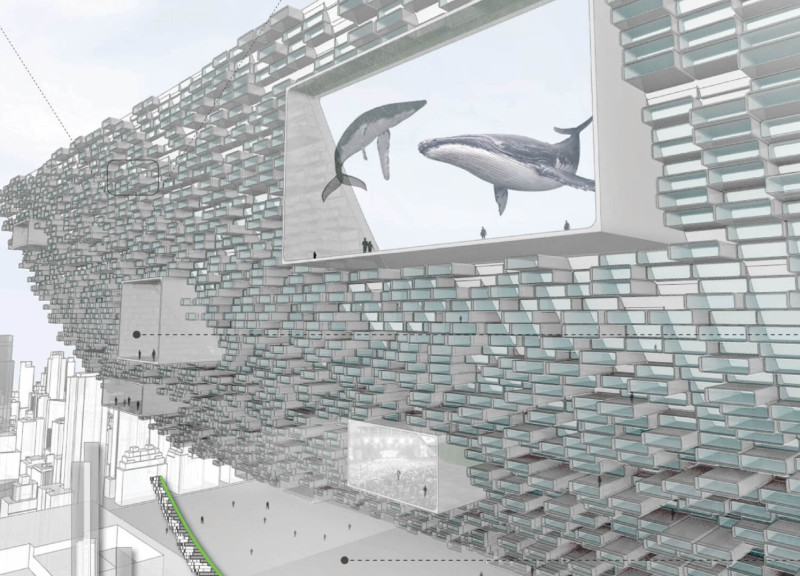5 key facts about this project
PARK UP: A VIRTUAL SKYSCRAPER FOR NEW YORKER combines urban life with virtual reality in New York City. This design merges the open space of Central Park with the tall buildings visible across the skyline. The project aims to create a living space that offers both natural beauty and urban excitement, focusing on making luxury living more available to a wider range of people.
Spatial Organization
The layout features a creative folding of Central Park’s southern section, which turns the area into a virtual parcel grid. This grid allows for organized spaces where individual units and community areas exist side by side. Smaller parcels can be customized for living or working, giving users the chance to create their own spaces in the virtual world. Prices for these units are set based on their height and size, adapting to the digital economy.
Public Engagement
At the center of the design is a virtual public plaza, designed to encourage social interactions and community events. This plaza serves as an important area for gatherings, fostering connections among users. Some larger spaces within the plaza are meant for specific activities like hosting NFT galleries and concerts, reflecting the growing relationship between architecture and digital culture.
Natural Integration
Attention to nature is crucial in the design, enhancing the experience of being outdoors. The sloped park design promotes activities such as relaxation and exploration, encouraging users to engage actively with their surroundings. This focus on integrating green spaces, even in a virtual setting, shows an awareness of how important nature is in urban environments.
The representation of this virtual skyscraper effectively blends the essence of New York City's character with new technological opportunities. As people move through this digital landscape, they can connect with others and enjoy a vibrant community life, all while appreciating the elements of urban living and nature.



















































